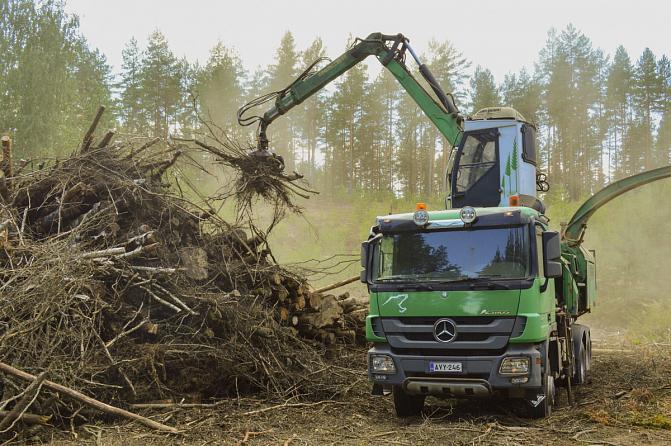A record-high volume of solid wood fuels consumed in 2021

According to the preliminary data of the Natural Resources Institute Finland (Luke), heating and power plants consumed 23.5 million cubic metres of solid wood fuels in 2021, with their energy content totalling 45.7 terawatt hours. This was the largest volume ever recorded in statistics. The volumes consumed at heat and power plants increased regarding nearly all wood fuel fractions.
Combined with the fuelwood burned in small-scale housing, the total consumption of wood fuels increased to 30.4 million cubic metres and 61 terawatt hours. The volumes are presented in solid cubic metres.
The consumption of solid wood fuels was affected by the increased volume of wood felled as raw materials for the forest industries, as a result of which the supply of forest chips increased and higher volumes of wood by-products were generated.
“The decreased use of peat and fossil fuels has increased the consumption of renewable energy. The role of wood fuels in the total consumption of energy has grown in recent years which can be seen as a significant increase in the consumption of solid wood fuels,” says Tuomas Niinistö, senior statistician at Luke.
More forest chips burned than ever before
The consumption of forest chips (10 million cubic metres) consists of forest chips burned at heating and power plants (9.4 million cubic metres) and in small-scale housing (0.6 million cubic metres).
“The increase in the consumption of forest chips at heat and power plants by a quarter from the previous year resulted in record-high consumption figures,” Niinistö says.
The consumption of forest chips in the combined production of power and heating was a quarter higher than in the previous year, totalling 5.8 million cubic metres. The volume of forest chips consumed in heat generation alone also broke a new record at 3.6 million cubic metres.
More than half of forest chips produced from small-diameter trees
Forest chips are mainly produced from small-diameter trees and logging residues, and also to a smaller extent from stumps and large-sized roundwood. In all these categories, chip volumes increased from the previous year.
According to Niinistö, a record-high volume (5.8 million cubic metres) of small-sized trees was used as raw materials for forest chips, up by a third from the year before. Small-sized trees cover pruned and unpruned stems, i.e. whole trees, as well as pulpwood. Heating and power plants burned 2.7 million cubic metres of logging residues.
The remaining forest chips were produced from stumps (0.3 million cubic metres) and large-sized, mainly decayed and dead roundwood (0.6 million cubic metres). Even though both of these figures increased from the previous year, they continue to account for a small part of all raw materials for forest chips.
Bark is the most important forest industry by-product in energy generation
A total of 12.6 million cubic metres of forest industry by-products and wood residues were burned in energy generation, up by more than two million cubic metres from the previous year.
Bark is by far the most important forest industry by-product in energy generation, accounting for 60 per cent, or 7.7 million cubic metres, of all by-products burned in energy generation (+13 per cent from the previous year). The volume of sawdust consumed in energy generation was 3.3 million solid cubic metres (+48 per cent) and that of industrial chips was 1.5 million solid cubic metres (+13 per cent).
In addition to forest industry by-products, 1.2 million solid cubic metres of recycled wood were burned, up by 20 per cent from the previous year. The role of wood pellets and bricks remains small, less than two per cent, considering the total consumption of solid wood fuels. However, their consumption increased by nearly half to 0.3 million solid cubic metres (0.4 million tons).
Information about the statistics
Data for the statistics is collected once a year from heating and power plants using solid wood fuels. The data presented herein is preliminary, and it can be specified at dates to be announced later. Final data on the use of wood in energy generation will be published in November 2022.
Statistical publication
See statistics data related to the news in the statistical publication.



